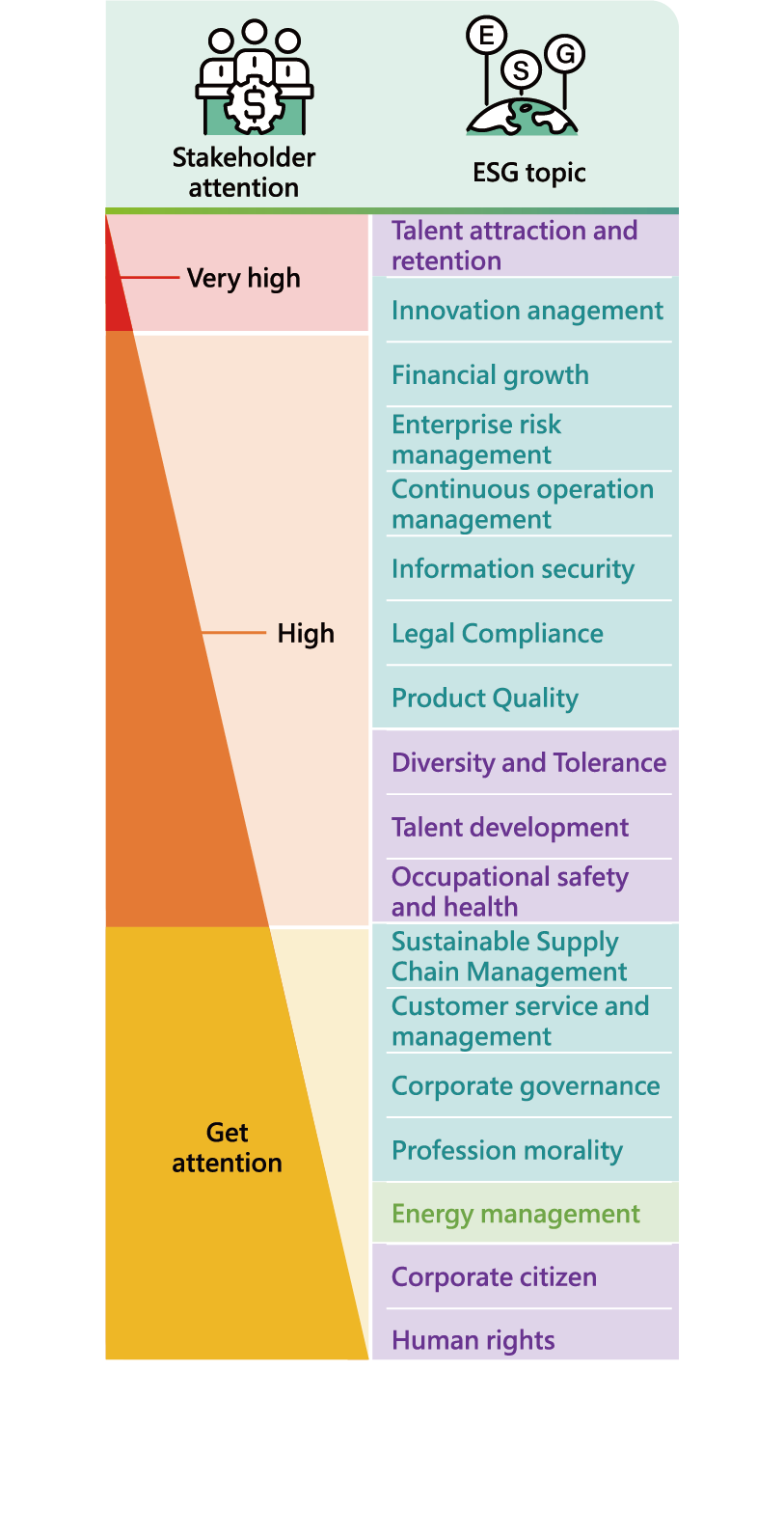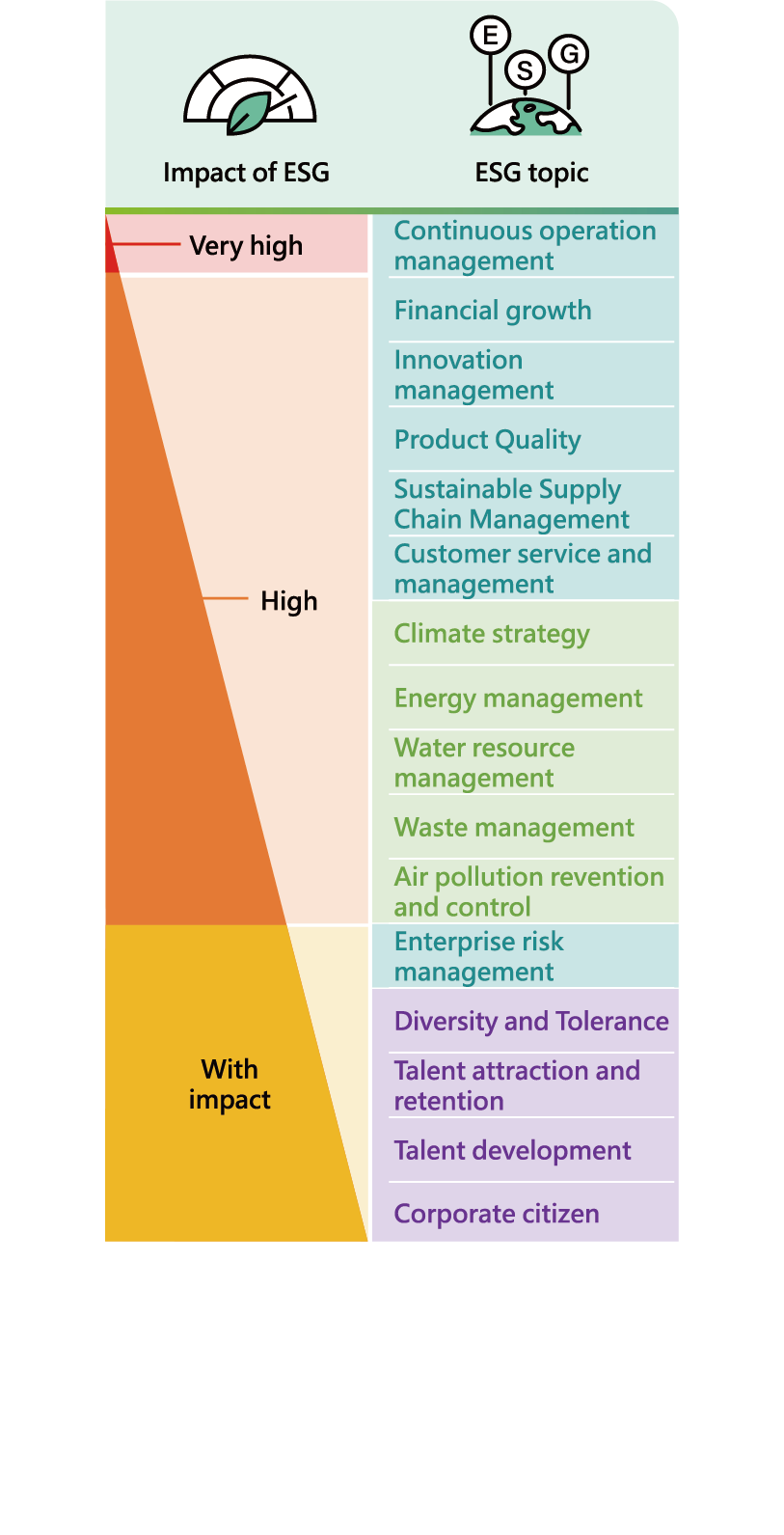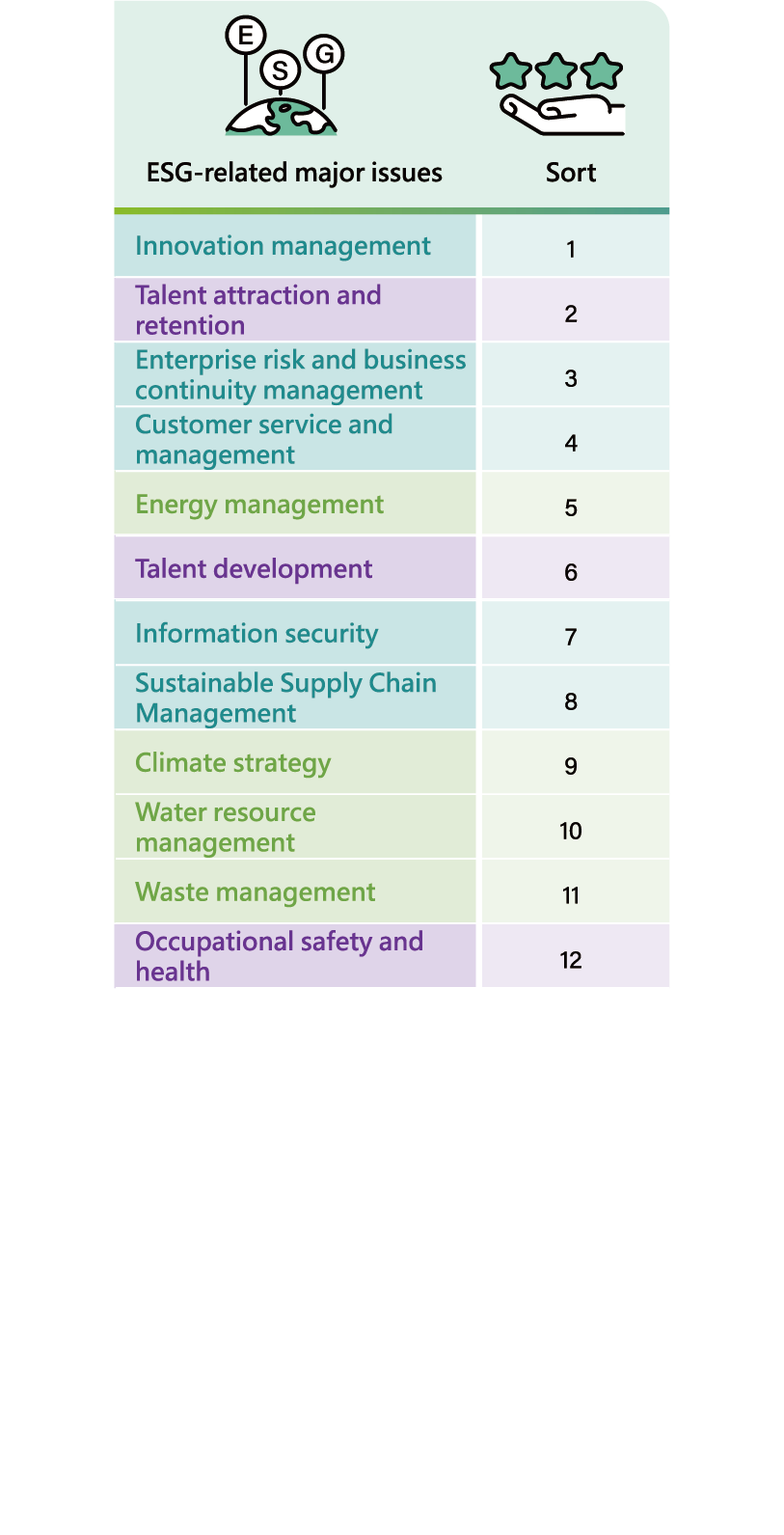According to GRI 3: Material Topics 2021 of the GRI Universal Standards 2021, VisEra adopted the economic, environmental, and human-social (human rights) impact assessment methodologies developed by the Value Balancing Alliance (VBA), Harvard Business School’s Impact-Weighted Accounts research program, and Business for Societal Impact (B4SI) to establish an impact-based materiality analysis process, identify critical issues for VisEra, and determine the boundaries and scope of sustainable information disclosure. This process also serves as the basis for setting long-term corporate sustainability objectives. In the process of drafting the 2022 Corporate Sustainability Report, we gathered feedback from 455 external stakeholders to learn about their concerns for VisEra’s sustainability issues. When measuring the impact of sustainability issues on operations, 48 executives and employees participated in determining the significance of each sustainability issue to operations. We identified 12 material sustainability issues from the 24 sustainability issues and set medium and long-term sustainability management objectives.
We compiled a list of 24 sustainability issues of concern to VisEra and accounted for international standards and regulations, sustainability investment ratings, and communication with stakeholders in the global semiconductor industry.
VisEra uses the information in the stakeholder viewpoints, impact on VisEra operations, and impact sustainable development for the materiality analysis in the 2022 Sustainability Report. To obtain the opinions of different stakeholders, we used a questionnaire for the materiality survey and focused on influential stakeholders that have frequent interactions with VisEra. In terms of materiality, VisEra followed the requirements in the GRI Standards and determines the significance of issues based on the level of stakeholders’ concern and impact on company operations. We also encouraged employees to identify the impact of each issue on the Company’s operations and determine the significance of the issue.
We expanded to the needs and expectations for disclosure of sustainability information of different stakeholders based on materiality analysis results and the themes and indicators in the GRI Standards. VisEra enhances the transparency of sustainability issues on different communication platforms including sustainability reports and company websites. The disclosure includes policies, organizations, methodology, effectiveness, and objectives.
We considered VisEra’s business strategy, potential opportunities, and risks in future operations, and the sustainability goals of the parent company (TSMC), and define 12 key issues as VisEra’s priorities for promoting corporate sustainability. We set sustainability management goals for 2025, and regularly track and review the achievement of these goals in meetings.
The parent company (TSMC), investors, employees, customers, suppliers/ contractors, government and society (community, media, academic institutions, accountants) are VisEra’s main communication targets.
Sources of sustainable development topics:
We used the survey to measure the level of stakeholder interest in sustainability issues. A total of 455 stakeholders participated in the survey:
We invited senior executives, the task forces of the ESG Sustainable Development Promotion Committee, and junior employees totaling 48 people to participate in the materiality analysis to measure the impact of each sustainability issue on business growth, customer trust, talent retention, and risk response. We ranked the impact of each sustainability issue on the Company’s operations to determine the significance of the issue.
We determine the significance of sustainability issues in terms of economic, environmental and human (human rights) impact. VisEra’s 19 executives and employees helped identify significant impacts and sustainability issues based on a sustainability impact evaluation methodology that focused on positive and negative impact, actual and potential impact, irreparability, and value chains.
We produced VisEra’s materiality matrix based on an analysis of the level of stakeholder concern and the impact of the issues on the Company’s operations. We selected 12 sustainability issues from the results to form the basis of VisEra’s 2022 Sustainability Report.
VisEra’s four value chain phases include procurement, optical design and semiconductor component production, testing, and customer use. They also determine the boundaries of sustainability disclosure to measure the impact of sustainability issues on the upstream and downstream phases.
We identified 12 key issues that correspond to 14 specific topics in the GRI Standards for the collection and disclosure of information based on the reporting requirements and management guidelines for each topic.
Senior executives discussed the goals and the feedback from the Directors before selecting 12 of the 24 sustainability issues for the formulation of the 2025 sustainabili[1]ty management goals. They included enterprise risk and business continuity management, innovation management, customer services and management, sustainable supply chain management, information security, climate strategy, energy management, water management, waste management, talent recruitment and retention, talent development, and occupational safety and health.
Each task force holds regular monthly meetings and confirms the target achievement status and important work plans in the quarterly meetings of the ESG Sustainable Development Promotion Committee.
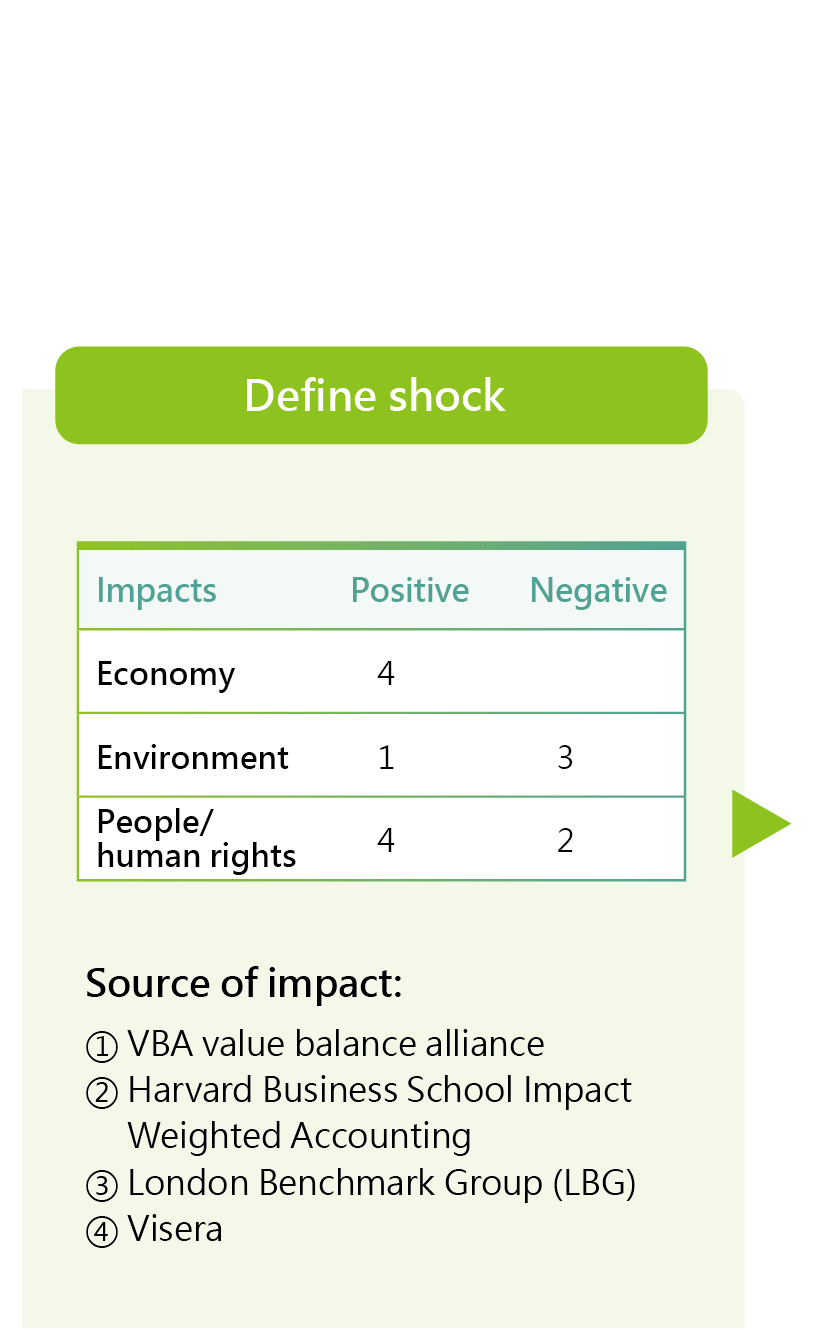
Define positive and negative impacts
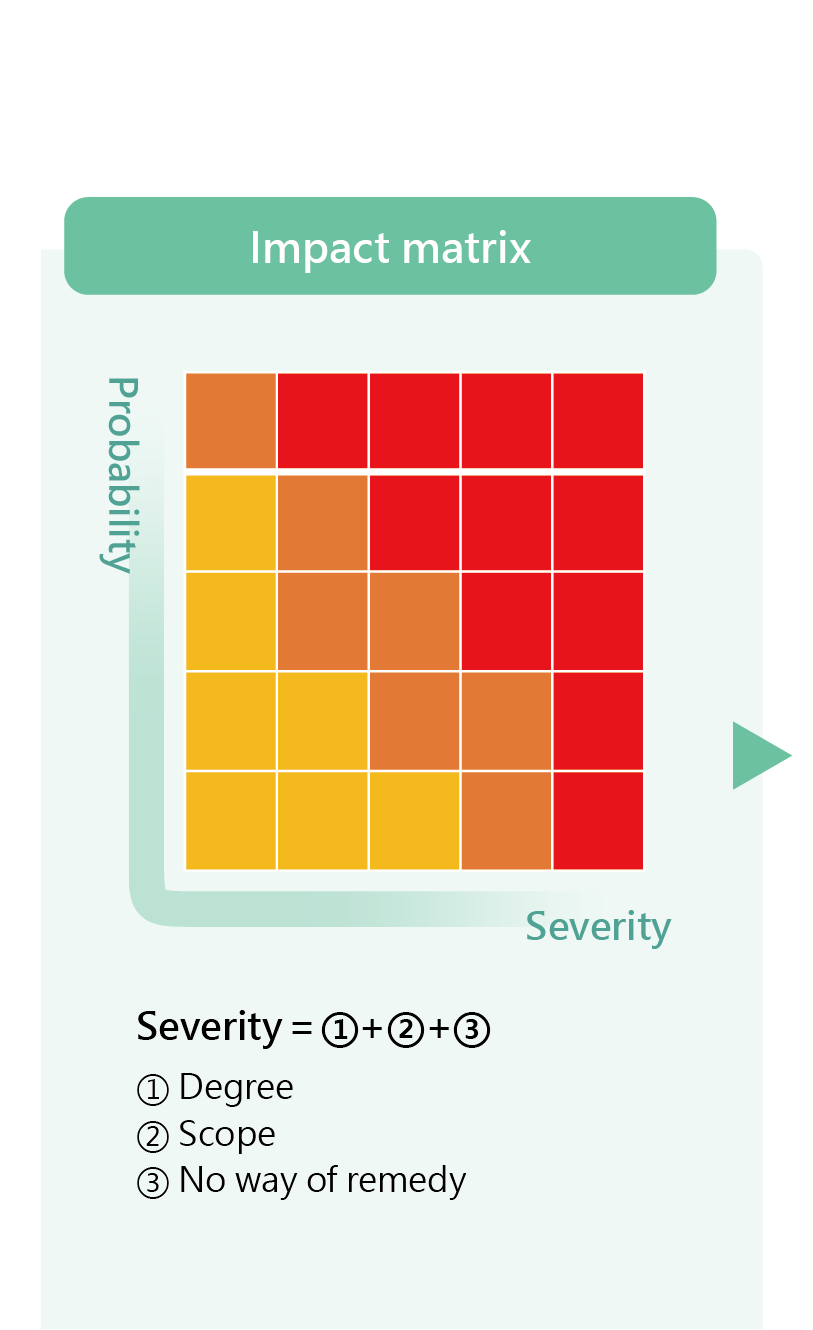
Significant impact analysis

Significant impact analysis

Sustainability issue affecting significant impacts

